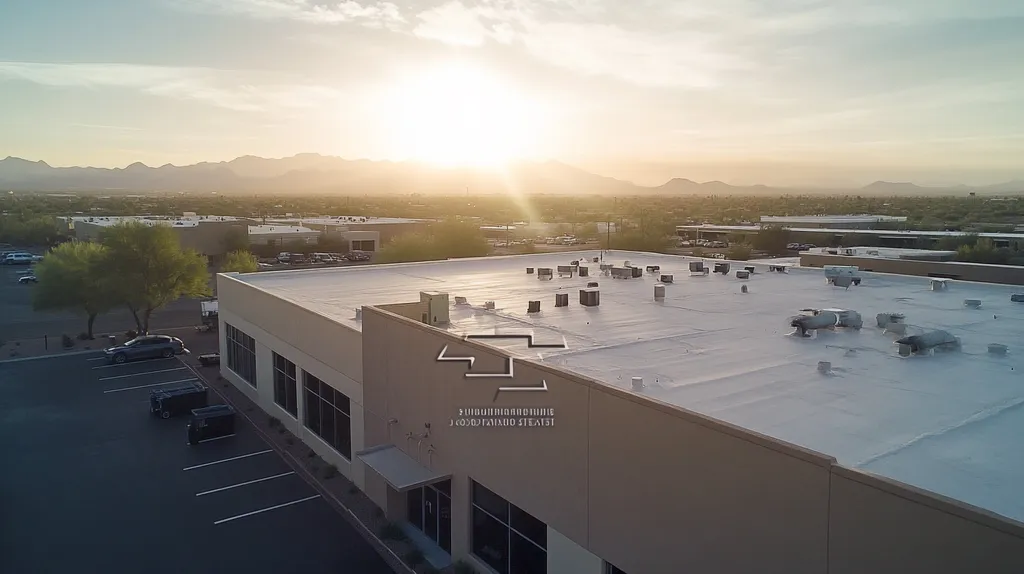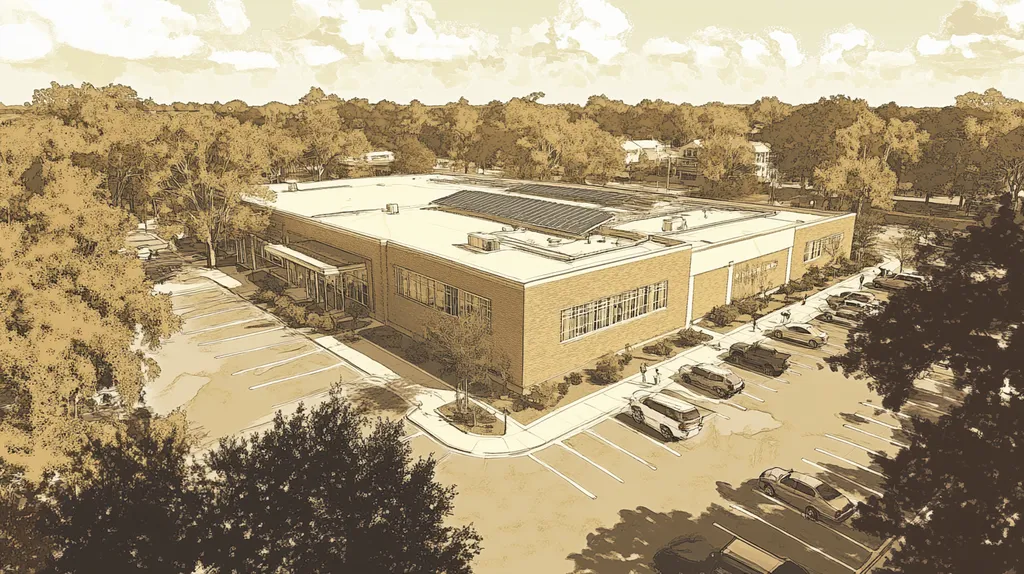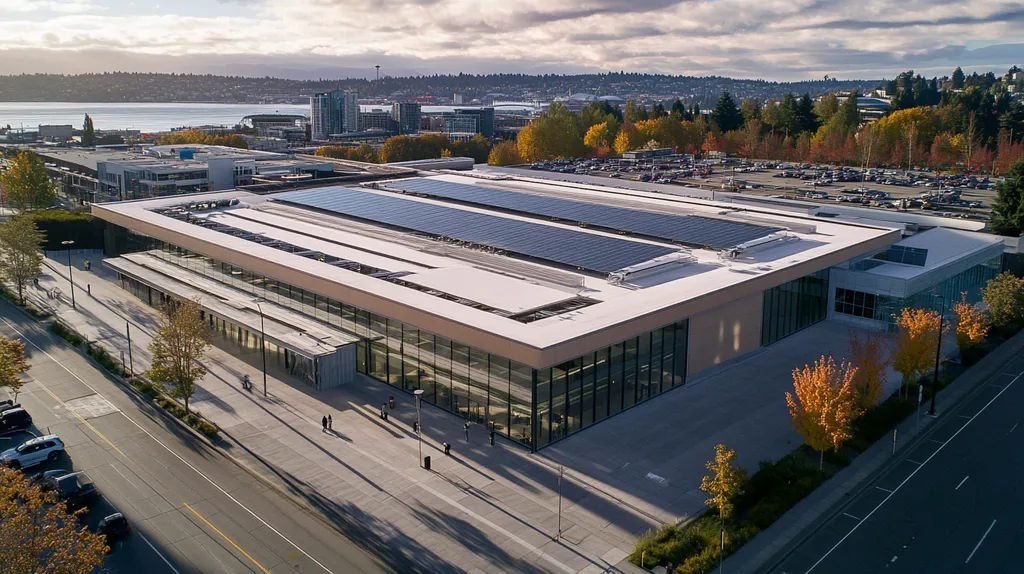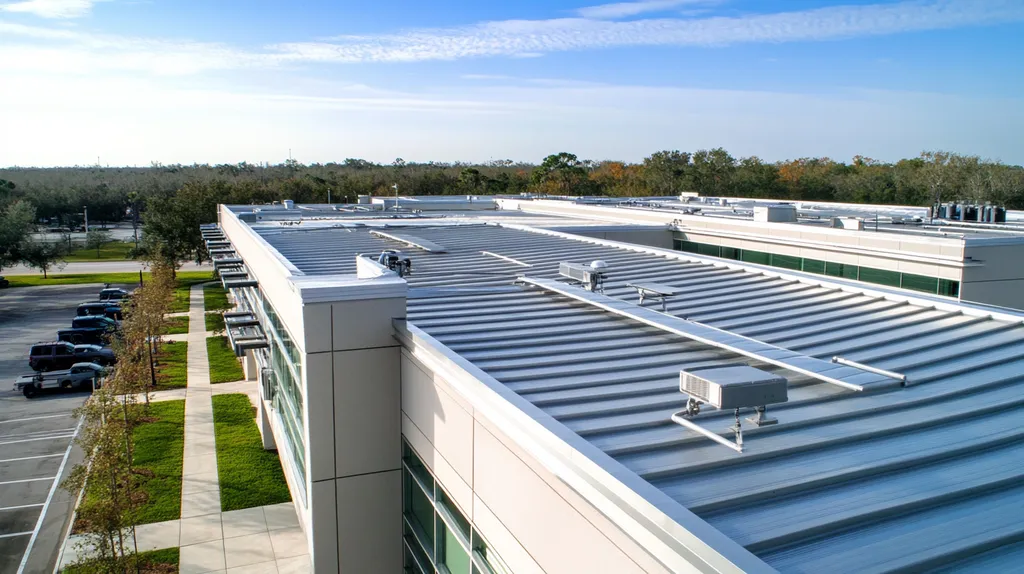In the complex world of industrial roofing, a startling 40% of warranty claims are denied due to improper ownership transfer documentation, costing property owners millions in unexpected repairs annually.
As aging commercial roofs reach critical maintenance milestones, understanding the intricacies of warranty ownership has never been more crucial for property managers.
This comprehensive guide separates fact from fiction regarding industrial roof warranty transfers, examining common misconceptions, practical implications, and evidence-based solutions that protect both property value and operational budgets.
SECTION 1: COMMON MISCONCEPTIONS
Misunderstanding industrial roof warranties can have serious financial repercussions for property owners. A startling 30% of property managers fail to recognize the complexities surrounding warranty transfers, which can lead to unexpected expenses during ownership changes. By unraveling three key misconceptions about warranty transfers, this section aims to empower property managers with the knowledge they need to navigate these crucial agreements intelligently.
Warranty Transfer Limitations
A prevalent myth is that all roofing warranties can be freely transferred to new owners. In truth, many manufacturers enforce strict transfer limitations. For instance, some warranties require a detailed application process, which could include additional fees or mandatory inspections.
Failure to acknowledge these limitations can leave property managers exposed when their property changes hands. If proper transfer procedures are not followed, warranties may become void, resulting in significant out-of-pocket repair costs for the previous owner.
Moreover, warranty types vary greatly in their transferability conditions. A manufacturer’s warranty might differ significantly from a contractor’s warranty, adding to the confusion during property transitions. Property managers must scrutinize these details to ensure comprehensive coverage continues.
Understanding these limitations upfront can be a game-changer, saving property owners from hefty repair bills in urgent circumstances. Clarity in transfer specifics paves the way for informed negotiations and refined risk management strategies.
Misunderstanding Warranty Types
Another crucial misconception arises from the varying types of roofing warranties. Many property managers mistakenly view all warranties as comparable in protection. However, these agreements can differ widely regarding coverage duration, materials included, and specific exclusions.
For example, a system warranty covers both the labor and the materials for a specified period, while a material warranty may only cover the roofing components. This difference can result in unexpected costs if issues crop up after the more limited warranties expire.
Additionally, some warranties offer extensive coverage, while others are limited to certain defects. Without a clear understanding of these details, property managers risk overlooking essential protections or misinterpreting their coverage. This confusion can lead to unpleasant surprises when repairs become necessary.
Thus, it’s imperative for property managers to carefully review warranty documents and discuss their terms with vendors. A thorough grasp of the different warranty types ensures property managers can make informed decisions and effectively manage their roofing assets.
Ignoring Transfer Windows
When it comes to transferring roofing warranties, timing is everything, yet many property managers overlook these critical transfer windows. Each warranty typically specifies a limited period for submitting transfer requests. Missing this window often results in the loss of coverage altogether.
Failing to meet these deadlines can lead to dire outcomes, especially during property transitions. For instance, a property owner might sell their asset within the allowed transfer period but neglect to process the warranty transfer beforehand. This mistake leaves the new owner without crucial coverage, exposing both parties to potential liabilities.
Additionally, some warranties may stipulate ongoing maintenance or inspections to keep the coverage active. If these responsibilities are ignored during the transfer, the new owner may face substantial repair costs soon after acquiring the property.
To prevent these pitfalls, property managers should devise a clear strategy for warranty transfers. Maintaining open communication with warranty providers is essential to ensure that all necessary actions are executed within the specified timeframes. This proactive approach secures valuable investments and supports the ongoing worth of the property.
SECTION 2: PRACTICAL IMPLICATIONS
Grasping the intricacies of transferring ownership for industrial roof warranties is crucial for property managers. A smooth transition can dramatically affect a property’s market value and its desirability among prospective buyers. Properties boasting transferable warranties often achieve higher sale prices, making this an essential consideration. This section delves into how warranties impact property value, outlines the responsibilities of both buyers and sellers, and dispels common misconceptions about administrative fees.
Impact on Property Value
Valid roof warranties can significantly enhance a property’s resale value. For properties lacking transferable warranties, attracting buyers becomes a challenge, as these assets may be viewed as riskier investments. With roofing replacements often costing tens of thousands of dollars, a reliable warranty serves as an invaluable asset for sellers.
Research has indicated that buildings with strong, transferable warranties can see property values rise by as much as 10%. In a competitive real estate landscape, such an advantage underscores the importance of effective warranty management.
Furthermore, potential buyers actively seek clarity regarding warranty ownership during their decision-making process. Without clear documentation, sellers risk inadvertently devaluing their asset.
Thus, property managers must ensure warranty terms are straightforward and easily transferable. A well-handled warranty not only safeguards the investment but also enhances the overall attractiveness of the property in the market.
Buyer and Seller Responsibilities
Both buyers and sellers have distinct roles in managing warranty ownership. Sellers are responsible for providing comprehensive documentation that demonstrates the warranty’s legitimacy and outlines any conditions related to its transfer. A lack of clarity can lead to misunderstandings, jeopardizing the sale.
Buyers, conversely, need to perform due diligence early in the acquisition process. It’s essential for them to confirm that the warranty is indeed transferable and to fully understand its implications. Overlooking these details can create unexpected financial challenges later on.
Clear communication between both parties regarding warranty status promotes a seamless transaction. Such cooperation is pivotal in mitigating potential conflicts and preserving the value of the property’s warranty.
Ultimately, proactive engagement in these responsibilities enables both parties to traverse the exchange confidently and protect their investment interests.
Administrative Fee Misconceptions
A widespread misconception regarding warranty transfers pertains to the nature of administrative fees. Many property managers may assume these fees are prohibitively high, leading them to hesitate in proceeding with ownership changes. In reality, most manufacturers and warranty providers impose reasonable fees for these services.
In fact, the costs for transferring ownership can sometimes be as low as $500, a nominal fee in light of the property value increase an updated warranty can provide. Recognizing this financial aspect is vital for informed decision-making among property managers.
Additionally, certain warranties can be transferred at no cost under specific conditions, which highlights the importance of thoroughly reviewing the fine print. Misunderstandings regarding these administrative fees can result in unnecessary delays and complicate property transactions.
By dispelling myths surrounding these costs, property managers can make better-informed choices that positively impact their financial outcome.
SECTION 3: COST OF MISINFORMATION
The implications of handling industrial roof warranties with care cannot be overstated. Misunderstandings about warranty ownership can lead to significant financial setbacks. A 2022 study revealed that over 30% of warranty claims were denied due to improper documentation. This section highlights the urgent consequences of missed deadlines, cost implications associated with labor and materials, and the potential voiding of warranties stemming from misinformation. Ignoring these critical aspects can threaten not only financial stability but also the integrity and functionality of the property.
Financial Consequences of Missed Deadlines
In the realm of industrial roof warranties, timing is everything. Missing a critical deadline for warranty ownership transfer can lead to denied claims if issues arise. This common oversight can result in unanticipated, out-of-pocket expenses that strain budgets significantly.
Consider the scenario where a property manager fails to submit ownership documentation within the allotted 30-day period after a sale. This seemingly minor oversight can lead to thousands of dollars spent on unforeseen repair costs when roof issues emerge.
Moreover, missed deadlines can escalate into disputes and complicate matters further. Organizations may find themselves embroiled in lengthy legal battles while trying to defend their warranty rights.
The consequences extend beyond financial costs, affecting property value and wasting precious time. Adopting a proactive approach to warranty management helps avoid these pitfalls and preserves property investments.
Labor and Material Cost Implications
Inaccurate or incomplete warranty documentation can escalate labor and material costs dramatically. When a warranty is voided, the property owner is often left to cover the full expense of any necessary work performed on the roof.
For example, if a roof suffers damage from a storm and subsequent warranty claims are denied due to improper forms, the property manager must absorb the total financial burden of repairs. This situation is alarmingly common within the industry.
Additionally, labor costs can rise as contractors may have to redo or modify work due to these warranty-related issues. The initial savings anticipated by utilizing a warranty can vanish in the face of unexpected expenses.
Investing time to understand and manage warranties effectively can prevent these financial setbacks, leading to smarter fiscal planning and resource allocation.
Voiding Warranty Due to Incomplete Forms
Warranties come with specific requirements that must be diligently followed to maintain their validity. A frequent misstep involves failing to submit the necessary forms or providing incomplete information.
For instance, neglecting to document a routine roof inspection can result in the warranty being voided entirely. This mistake leaves property managers unprotected when costly repairs are required.
When warranties are voided, the repercussions extend beyond immediate repair costs and can dent future insurance claims, rendering properties less appealing to prospective buyers. Understanding the critical nature of accurate documentation can be a safeguard against these negative impacts.
Encouraging a culture of adherence to warranty procedures among all involved parties enhances overall operational integrity. From contractors to facility managers, prioritizing complete and accurate documentation becomes essential in protecting warranty rights.
SECTION 4: REALITY CHECK
Transferring an industrial roof warranty is not just a procedural formality; it carries significant financial ramifications for property managers. Missteps in understanding warranty ownership can expose properties to unexpected and costly repairs. By clarifying key issues, including the distinctions between warranty types, evaluating remaining periods, and recognizing coverage changes upon transfer, property managers can safeguard their investments and ensure long-term roof integrity.
Understanding Manufacturer and Contractor Warranties
When navigating warranty transfers, it is essential to understand the distinction between manufacturer and contractor warranties. Manufacturer warranties typically guarantee against defects in materials and workmanship for a specified duration. In contrast, contractor warranties emphasize installation quality and often have shorter timeframes.
For property managers, grasping these differences is vital for comprehensive protection. For instance, a contractor may only promise coverage for two years, while a manufacturer might offer a lengthy 20-year warranty on the roofing materials. This disparity can greatly influence the owner’s budgeting and long-term planning.
Additionally, many manufacturers impose specific maintenance requirements to keep their warranties valid. Neglecting routine inspections could render a warranty void, leaving buildings vulnerable to damage. Equipped with this understanding, property managers can make informed decisions about ongoing roof care to secure their assets.
Ultimately, mastering the nuances of both manufacturer and contractor warranties empowers property managers to ensure thorough and lasting coverage during ownership transitions.
Evaluating Remaining Warranty Periods
Carefully evaluating the remaining warranty period is essential during the transfer of roofing warranties. The duration left on an original warranty directly affects future repair and replacement costs. A short warranty period can severely limit options for a new owner.
For example, if a property has only five years remaining on its warranty, the new owner could face substantial costs shortly after acquisition. Property managers must diligently review warranty documentation and note any remaining coverage to avoid financial pitfalls.
Moreover, it’s crucial to check the terms of warranty transferability. Some warranties may become void with a change in ownership, while others might incorporate specific stipulations for transfers. Understanding these rules can protect the property and its future value.
By proactively examining remaining warranty periods, property managers can navigate ownership transitions effectively and mitigate liabilities that may arise from warranty complications.
Coverage Changes After Transfer
The transfer of industrial roof warranties often comes with changes in coverage. Some warranties may become void upon transfer, while others may retain their original protections. For property managers, comprehending these shifts is essential for maintaining the roof’s integrity.
For instance, a warranty that initially covered twenty years for the original owner might drop to only ten years after a transfer. This reduction leaves the new property owner susceptible to unexpected repair costs.
Furthermore, the coverage can be affected by the property’s condition at the time of transfer. Certain warranties might impose different terms based on prior damage or lack of maintenance. Exploring these nuances is crucial to uncover potential hidden risks during ownership changes.
Being aware of possible coverage changes allows property managers to strategize accordingly, ensuring continued roof health and protection against future financial challenges.
SECTION 5: EVIDENCE-BASED ALTERNATIVES
Transferring an industrial roof warranty isn’t just a matter of paperwork; it’s a vital process that can impact financial stability. Many property managers inadvertently overlook essential documentation or neglect to notify key stakeholders during this transition. Such oversights can compromise warranty coverage, leading to costly repairs that could have been avoided. By understanding the correct procedures involved in this transfer, property managers can secure their investments and prevent unnecessary expenditure.
Proper Documentation for Transfer
Proper documentation acts as the cornerstone of a successful warranty transfer. Property managers should start by gathering all relevant warranty documents and maintenance records before initiating the transfer process. This paperwork not only showcases the roof’s maintenance history but also ensures compliance with manufacturer requirements.
It’s essential to update existing contracts to accurately reflect new ownership. Any gaps in documentation can create disputes or question the validity of the warranty down the road.
Additionally, an organized record of all inspections and repairs conducted during the warranty period will solidify the case for a smooth transfer and assist in negotiating any revised terms with the new owner.
Keeping copies of all correspondence related to the warranty transfer is just as important. These records could prove invaluable in the event of a warranty claim.
Notifying Manufacturers and Contractors
Another critical step in the warranty transfer process is notifying both manufacturers and contractors about the change in ownership. Once the documentation is in order, property managers need to promptly inform all relevant parties of the transfer. This includes manufacturers who issued the warranty and contractors responsible for installation or maintenance.
Timely notifications allow manufacturers to update their records, ensuring the new owner receives the appropriate warranty protections. It also facilitates support in the event of future warranty claims.
Sending a formal written notification creates a documented trail for reference. This proactive approach not only fortifies the new owner’s position but also fosters a cooperative relationship with service providers.
Failure to notify these key players can lead to disputes regarding coverage, potentially leaving the property vulnerable to significant expenses arising from unrecognized warranty obligations.
Avoiding Common Transfer Mistakes
Even minor oversights during the warranty transfer process can snowball into major complications. A frequent misstep involves neglecting to confirm whether the existing warranty is transferable. Since warranties often have unique stipulations, being aware of these details is essential for a seamless transition.
Moreover, inadequate communication among all parties can foster misunderstandings about the warranty’s status. Property managers should facilitate discussions between previous and new owners to ensure clarity and transparency.
Additionally, failing to review warranty terms after the transfer can lead to unmet expectations and potential conflicts. Understanding the specifics enables the new owner to know their rights and responsibilities.
Lastly, missing transfer deadlines can jeopardize coverage. Promptly completing the transfer process is crucial to prevent gaps in warranty protection and financial repercussions.
SECTION 6: TEST AND VERIFY
Understanding warranty ownership in industrial roofing is essential to protect against significant financial losses. In fact, over 30% of warranty claims are denied due to incorrect transfer procedures. Property managers must act swiftly to verify the status of warranty transfers, ensuring continued coverage and shielding themselves from unexpected repair costs. This section outlines crucial steps for verifying warranty status and compliance, enabling property owners to make informed decisions.
Verifying Warranty Transfer Status
The first step to effectively managing an industrial roof warranty is to confirm its transfer status. This involves reaching out to the manufacturer or warranty issuer for official confirmation. Property owners should request written documentation that clearly outlines the current warranty status following any ownership change.
In many instances, the warranty does not automatically transfer to the new owner, depending on the specific terms outlined by the warranty issuer. Being proactive about this verification can prevent unexpected financial burdens in the future.
Keeping a detailed record of communications concerning warranty verification is crucial, especially in cases where coverage may be contested. A well-documented process simplifies troubleshooting and fortifies claims if roof issues arise.
Ultimately, the verification process minimizes risks associated with misunderstandings about warranty status, ensuring all parties are on the same page regarding current coverage and its scope.
Reviewing Warranty Terms and Conditions
Next, property managers should undertake a meticulous review of the warranty terms and conditions. Each warranty possesses unique stipulations that can influence coverage, making it essential to understand these requirements for effective roof maintenance and management.
Focus areas should include warranty duration, coverage limits, and maintenance obligations. Certain warranties may require regular inspections and prompt repairs to maintain validity. Neglecting these responsibilities can result in the loss of critical warranty protections.
Moreover, property managers need to identify any specific conditions related to ownership changes. Some warranties mandate submission of certain documents within a defined timeframe post-transfer. Failure to comply may lead to a forfeiture of coverage.
This thorough review not only equips property managers to fulfill warranty conditions but also provides insights into the long-term financial implications of their roofing decisions.
Ensuring Compliance with Transfer Procedures
Compliance with warranty transfer procedures is vital for securing rightful coverage. Manufacturers often require specific forms to be completed and submitted to validate the transfer. Therefore, property managers must meticulously follow these protocols.
A common mistake involves submitting documentation without the required signatures from previous owners. Such an oversight can delay approval and potentially lead to disputes. Ensuring that all forms are correctly completed and submitted in a timely manner is imperative.
Property owners should also retain copies of all submitted documents, as effective records management is essential for avoiding future discrepancies. This practice serves as protection for all parties involved.
Lastly, staying informed about manufacturer policies and warranty changes demonstrates proactive management. Being knowledgeable about these aspects opens up avenues for leveraging warranty benefits effectively and safeguards against unforeseen liabilities.
Moving Forward
The landscape of industrial roofing has evolved dramatically since the era of simple tar and gravel installations, yet warranty transfer remains a critical vulnerability for property owners.
With 40% of warranty claims denied due to transfer documentation errors, the stakes couldn’t be higher for today’s facility managers.
The evidence shows that proper warranty transfer procedures can preserve hundreds of thousands in property value while protecting against catastrophic repair costs.
As modern roofing systems become increasingly sophisticated, the margin for error in warranty management continues to shrink.
Property managers who master these transfer protocols, maintain meticulous documentation, and stay current with manufacturer requirements will secure their investments for the decades ahead.
FREQUENTLY ASKED QUESTIONS
Q. What are common misconceptions about commercial roof warranties?
A. Many assume all warranties are transferable, which is often not the case. Some warranties have strict limitations, including application processes and possible fees, affecting the coverage. Understanding these details can prevent costly repairs when ownership changes.
Q. How do industrial roof warranties affect property value?
A. Valid roof warranties can significantly boost a property’s resale value. Buildings with transferable warranties are viewed more favorably by buyers, often leading to higher sale prices and smoother transactions. Effective warranty management is pivotal during property sales.
Q. What are the financial risks of incorrect warranty handling?
A. Missteps in warranty management can lead to dire financial consequences. Over 30% of warranty claims get denied due to improper documentation. Missing deadlines can result in significant out-of-pocket expenses, threatening the financial stability of property owners.
Q. What key aspects do property managers need to know about warranty transfers?
A. Understanding the differences between manufacturer and contractor warranties is crucial. Evaluating remaining warranty periods and recognizing changes in coverage upon transfer ensures the property’s integrity. Proactive management helps avoid misunderstandings that could jeopardize financial security.
Q. What proper documentation is needed for warranty transfers?
A. Property managers should gather all relevant warranty documents, maintenance records, and update contracts to reflect new ownership. Keeping accurate documentation ensures compliance with manufacturers and aids in negotiations. Gaps in paperwork can complicate future claims.
Q. How can I verify the status of an industrial roof warranty?
A. Confirming warranty status involves contacting the manufacturer for official documentation. This verification prevents unforeseen expenses. Keeping a record of these communications is essential for resolving any potential disputes regarding current coverage.
Q. What common mistakes should I avoid during warranty transfers?
A. Avoid neglecting to confirm transferability and miscommunication among parties involved. Ensure that you understand specific warranty terms and meet transfer deadlines. These oversights can jeopardize warranties and lead to costly surprises later on.









